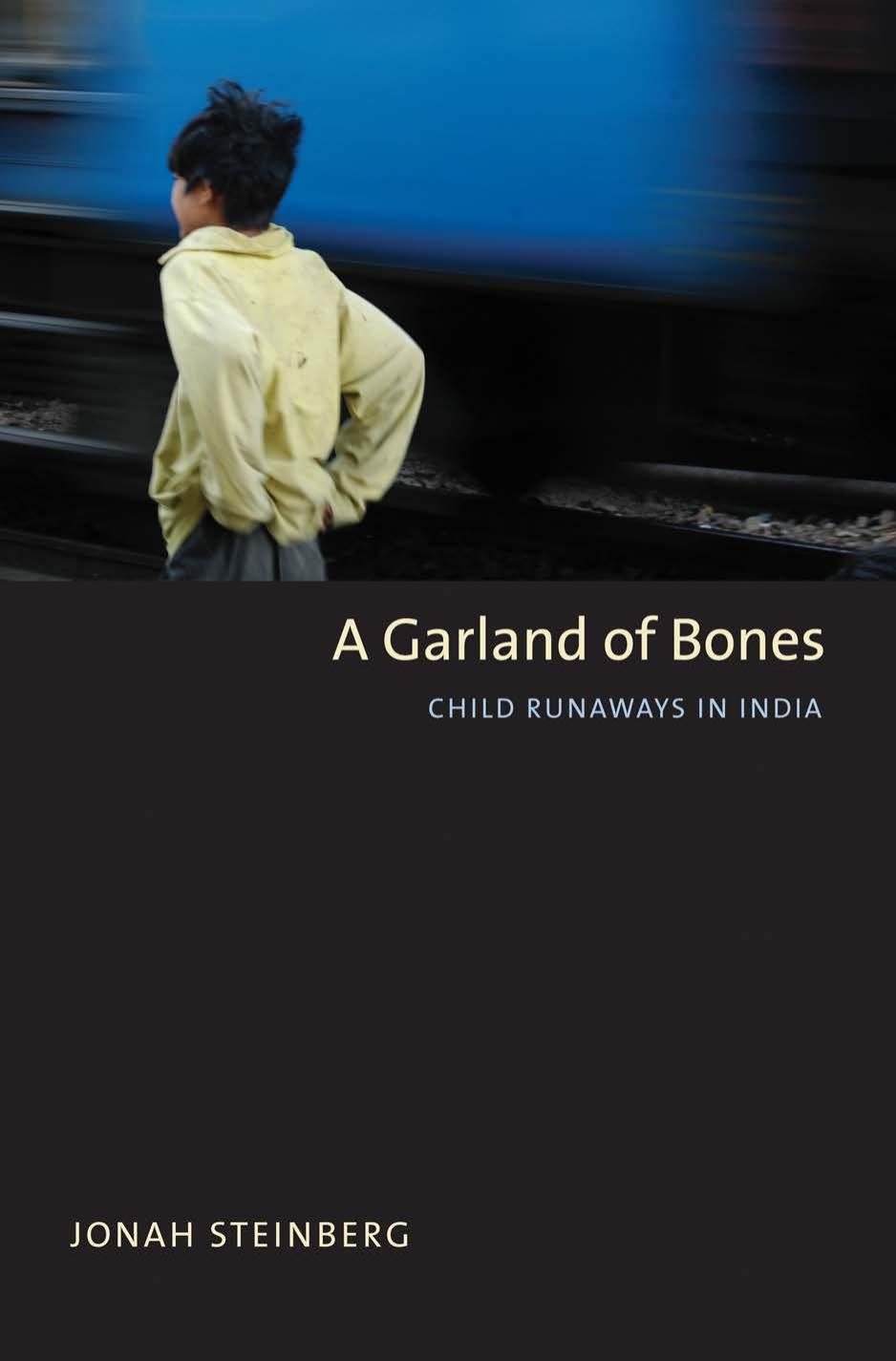A Garland of Bones by Jonah Steinberg

Author:Jonah Steinberg
Language: eng
Format: epub, pdf
Publisher: Yale University Press
Published: 2019-03-03T16:00:00+00:00
Shadow zone: Raju, rushing train, soaked rag, Hazrat Nizamuddin Railway Station
There is also, of course, the World Beyond, beyond even the far reaches of the station, the part of the city that exists in some complementary relationship to the bounded stations. These are the adjoining bazaars and slums where the boys trade their bottles (or bodies) for money. Here are also the service providers for the stations’ many denizens: places travelers with a long wait or a canceled train can shop or stay; workshops where small components for the train station itself, or for trains, can be purchased; and, most significantly for this chapter, the many nongovernmental organizations serving the children. Children flow in and out of these organizations and, despite a marked suspicion about the institutions’ motives and policies, move between them across the entire space of the city.
In the indeterminate gap between the notion of defiant claim, by the children, and of coercive dislocation, by others, between choice and necessity, there lingers an insistent and nagging question that I have not been able to answer. Is this “their” space, as Amir called it, only because it is the only available space, because street children are cast so consistently out of other people’s fixed spaces of habitat that they are relegated to other people’s spaces of transience?
An alternative argument to the one I’ve made above, then, earlier in this section, might be that “antidiscipline” is an over-read, or an erroneous read (or a romantic read: see Abu-Lughod 1990), and that what appears to be resistance in railway space is itself the satisfaction or consummation of the objectives of confinement and discipline; that the invisible, evasive existence I document here is just the manifestation of the place accorded by others to such children, though it is not made explicit, and that what appears as defiance is in fact the push and struggle that such subordination requires of them just to survive in the corner of the world to which they have been relegated, that they are not voluntary inhabitants of the station but rather its prisoners. I do not believe this to be true, nor do I want to.
I recognize that both interpretations can be true, that what appears as “agentivity” from one angle might be choicelessness from another, and that what appears as a space of subjection from one position might be spaces for transgression, or liberation, from another. I recognize, further, that the lack of choice on the structural level—departures rooted in misery and poverty—still allows for the appearance and the sensation, if not the reality, of autonomy and intentionality on another. And fundamentally, the conviction I came away with, as I left Delhi, was that the children fashion and conceive of their lives as the product of an active choice that amounts to a rejection of others’ prescriptions; I cannot but take that seriously.
The railway contains its own contradictions, weds and welds together disparate poles of subject making and subjection. In a space whose very definition is imagined to be line and discipline, steel, rock, and timber, antidisciplines indeed emerge.
Download
This site does not store any files on its server. We only index and link to content provided by other sites. Please contact the content providers to delete copyright contents if any and email us, we'll remove relevant links or contents immediately.
| Arms Control | Diplomacy |
| Security | Trades & Tariffs |
| Treaties | African |
| Asian | Australian & Oceanian |
| Canadian | Caribbean & Latin American |
| European | Middle Eastern |
| Russian & Former Soviet Union |
The Secret History by Donna Tartt(18846)
The Social Justice Warrior Handbook by Lisa De Pasquale(12141)
Thirteen Reasons Why by Jay Asher(8794)
This Is How You Lose Her by Junot Diaz(6794)
Weapons of Math Destruction by Cathy O'Neil(6143)
Zero to One by Peter Thiel(5686)
Beartown by Fredrik Backman(5597)
The Myth of the Strong Leader by Archie Brown(5425)
The Fire Next Time by James Baldwin(5249)
How Democracies Die by Steven Levitsky & Daniel Ziblatt(5128)
Promise Me, Dad by Joe Biden(5087)
Stone's Rules by Roger Stone(5026)
A Higher Loyalty: Truth, Lies, and Leadership by James Comey(4843)
100 Deadly Skills by Clint Emerson(4840)
Rise and Kill First by Ronen Bergman(4703)
Secrecy World by Jake Bernstein(4644)
The David Icke Guide to the Global Conspiracy (and how to end it) by David Icke(4625)
The Farm by Tom Rob Smith(4435)
The Doomsday Machine by Daniel Ellsberg(4416)
